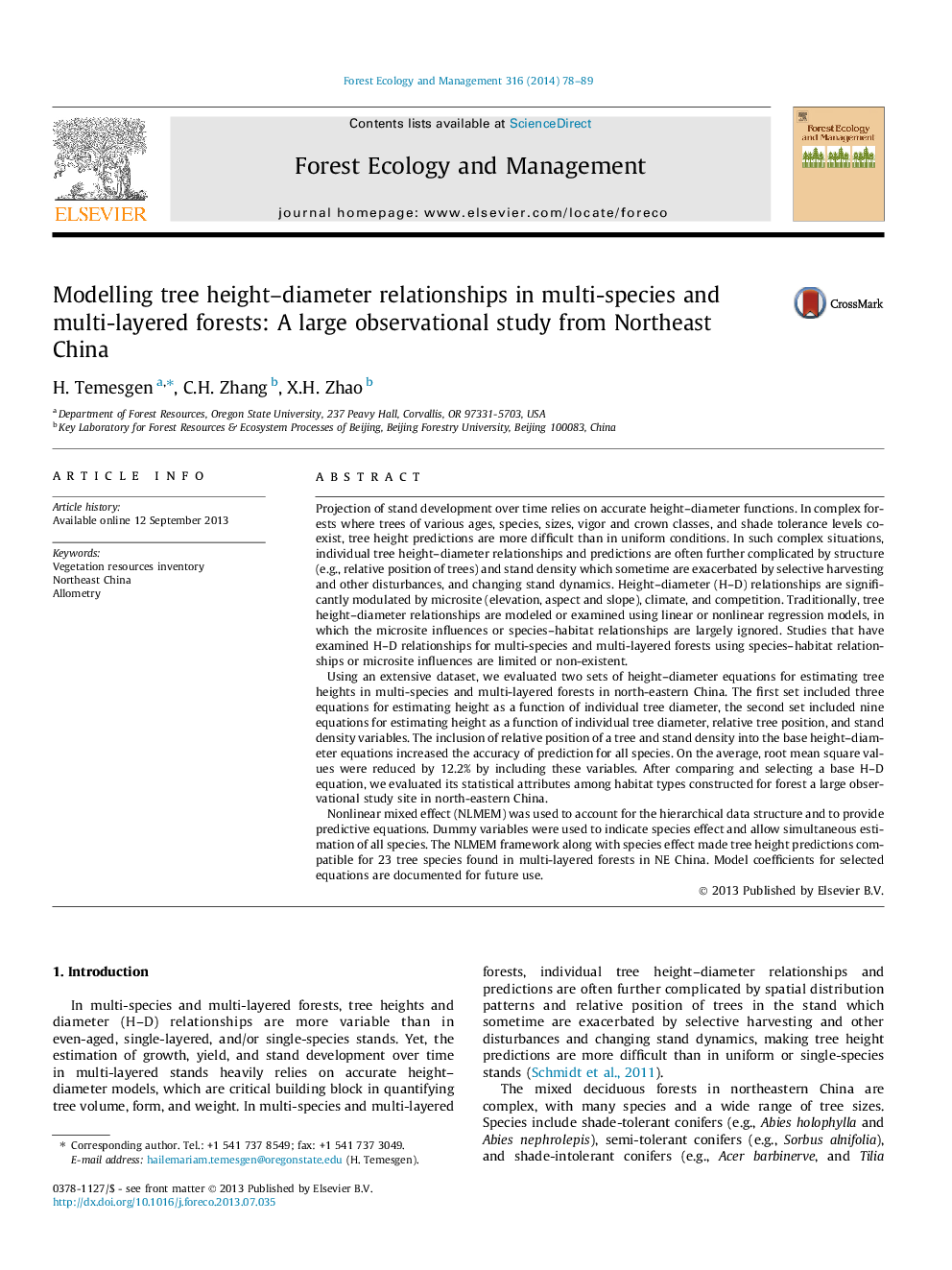| کد مقاله | کد نشریه | سال انتشار | مقاله انگلیسی | نسخه تمام متن |
|---|---|---|---|---|
| 86920 | 159221 | 2014 | 12 صفحه PDF | دانلود رایگان |
• Relative tree position and stand density improved tree height prediction accuracy.
• Height–diameter relationships are modulated by microsite and species effect.
• Nonlinear mixed models accounted for data structure and for habitat effect.
• Including species effect made tree height predictions compatible for 23 tree species.
Projection of stand development over time relies on accurate height–diameter functions. In complex forests where trees of various ages, species, sizes, vigor and crown classes, and shade tolerance levels co-exist, tree height predictions are more difficult than in uniform conditions. In such complex situations, individual tree height–diameter relationships and predictions are often further complicated by structure (e.g., relative position of trees) and stand density which sometime are exacerbated by selective harvesting and other disturbances, and changing stand dynamics. Height–diameter (H–D) relationships are significantly modulated by microsite (elevation, aspect and slope), climate, and competition. Traditionally, tree height–diameter relationships are modeled or examined using linear or nonlinear regression models, in which the microsite influences or species–habitat relationships are largely ignored. Studies that have examined H–D relationships for multi-species and multi-layered forests using species–habitat relationships or microsite influences are limited or non-existent.Using an extensive dataset, we evaluated two sets of height–diameter equations for estimating tree heights in multi-species and multi-layered forests in north-eastern China. The first set included three equations for estimating height as a function of individual tree diameter, the second set included nine equations for estimating height as a function of individual tree diameter, relative tree position, and stand density variables. The inclusion of relative position of a tree and stand density into the base height–diameter equations increased the accuracy of prediction for all species. On the average, root mean square values were reduced by 12.2% by including these variables. After comparing and selecting a base H–D equation, we evaluated its statistical attributes among habitat types constructed for forest a large observational study site in north-eastern China.Nonlinear mixed effect (NLMEM) was used to account for the hierarchical data structure and to provide predictive equations. Dummy variables were used to indicate species effect and allow simultaneous estimation of all species. The NLMEM framework along with species effect made tree height predictions compatible for 23 tree species found in multi-layered forests in NE China. Model coefficients for selected equations are documented for future use.
Journal: Forest Ecology and Management - Volume 316, 15 March 2014, Pages 78–89
